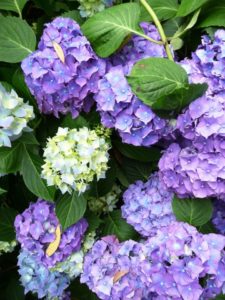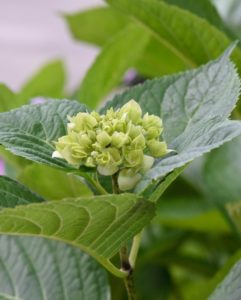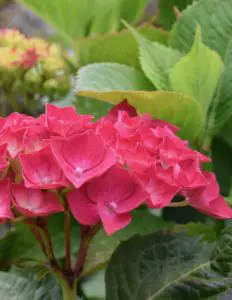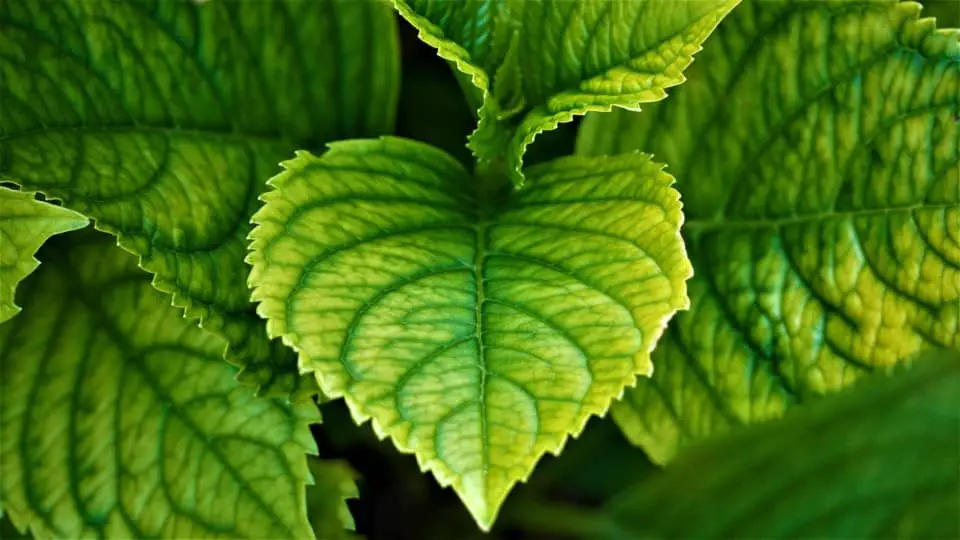Some links in the post are affiliate links and I get a commission from purchases made through some links found in the post.
Taking care of your plant is hard work and not easy at all and when you see anything happening to your plant you might wonder where did you go wrong?
Well, then just like all other plants, a hydrangea is no exception and often you might see your plant not being its usual self.
There can be many problems over a plants life one of them being curling of the leaves, in this case of your hydrangea plant.
There are many different reasons to it however, if you catch the problem early on this won’t be a big problem and you can fix it in no time!
Everyone wants to see their plant healthy and happy and any change in your plant could mean that there is a change in its surroundings.
Therefore, as soon as you notice a problem make sure that you first look at all the possible reasons as to why your plant is changing and then find a solution for it.
There are many reasons your hydrangea may be curling which are overwatering, underwatering, excessive light, frost damage, pests, the variety of hydrangea, fungus infections, fertilizer issues and replanting shock.
Let’s look at why your hydrangea leaves are curling, its causes and its solutions as well!
Why Are My Hydrangea Leaves Curling?
Overwatering
 Overwatering is a big cause for the curling of the leaves of your plant. Usually if you have overwatered your plant, you will see the leaves of your plant curling downwards.
Overwatering is a big cause for the curling of the leaves of your plant. Usually if you have overwatered your plant, you will see the leaves of your plant curling downwards.
This usually happens because too much water does not let the oxygen reach the roots properly and hence the flow of minerals to the leaves is disrupted.
This is the main reason why the leaves start to curl due to overwatering your plant.
Underwatering
Underwatering is also often the cause of curling of your leaves. Dehydration causes the leaves to curl upwards.
If the root of your plant has been dry for a long time you will see the leaves beginning to curl and if it keeps getting sunlight you will also find the leaves burning.
To avoid this problem water your hydrangeas regularly. To check if the soil of your plant is dry touch the soil of your plant. If the soil is one inch dry, then your plant needs water.
Even if the soil is slightly moist and not dry you can still water your plant. You will need to water your plant more if the weather conditions are dry where you live and especially more during summers.
Excessive sunlight
Too much sunlight can cause the leaves of your plant to curl and break off.
Although this problem is more common with the Bigleaf hydrangea, it can happen to any other type of hydrangea as well if it’s given too much sunlight.
There are some other types of hydrangeas which can tolerate a lot of sun. So, when you buy your hydrangea make sure to buy one according to the area where you live so that the leaves of your hydrangea don’t curl and fall off.
Frost Damage
Frost damage is very dangerous for hydrangeas and is one of the most common reasons for the curling of your hydrangea leaves.
Once your plant has begun to unfold its leaves ,which is during springtime, and if then the temperature drops then it will be very harmful for your plant.
It will cause the leaves to curl and if the leaves are mature then the leaves will face black spots but new leaves which are beginning to grow will be the most effected by frost damage and they will curl, and your plant might also shed the leaves.
If your plant has been affected by frost damage, there is not much you can do except that you can remove the damaged parts and wait for the next season for the plant to grow.
You may also like: Why does my hydrangea have small flowers
Pests
A pest attack is common for plants and the same goes for your hydrangea plant. If your plant has been infected with a pest attack you will see the leaves of your plant curling.
The leaves will usually curl inwards, and this is because the pests like to feed on the under side of the leaves which causes the leaves to change its shape and curl inwards.
Type Of Hydrangeas
 There are some types of hydrangea plants that are more common and more susceptible to leave curling.
There are some types of hydrangea plants that are more common and more susceptible to leave curling.
Most of the hydrangea plants are very sensitive to a change in the environment and even a slight change in the environment will cause the leaves to change it shape.
Some of the difficult varieties to take care of in hydrangea plants is the bigleaf and smooth hydrangeas. Even slight dehydration to this plant will cause lots of change in the way it looks.
They love lots of water and thrive in one inch of water per week. So, if you’re looking for a hydrangea plant for your garden try to go for one which is not too difficult to take care and is also less sensitive than other types of hydrangeas.
Fungus
If you see any black spots and curling of your leaves in your hydrangea plant, you should know that its probably a fungal infection that is affecting your plant.
If that is the case, try to water your plant only at the base and not on the leaves as it might trigger the problem more. Leaves that have dark spots should be removed and remove the branches that have been affected.
Since fungus loves to grow in areas that are dark and moist try to keep your hydrangea plant away from such areas so that the fungus does not get a chance to thrive!
Fertilizer
Sometimes the curling of leaves and brown spots is also due to your plant getting too much fertilizer. Try to use 2 cups of fertilizer if you have an area of 9.2 square meters.
Also, your fertilizer should be a mixture of 10 by 10. This is usually a problem for plants growing in container so if your hydrangea is in a container then make sure that you don’t use any other fertilizer for the rest of the season.
Plus, too much fertilizer in summers will also cause your hydrangeas leaves to curl so make sure that you don’t give them too much fertilizer during these months.
We have an article on how to make natural fertilizer for your hydrangea here.
Replanting
Sometimes your hydrangeas leaves might curl if you have replanted your plant. Replanting can have some serious consequences for your plant especially if you have bought it from a nursery and then planted it in your yard.
Since it is grown in different conditions and then replanted it might give them a replantation shock to your plant.
So, if you are buying your hydrangea from somewhere try to buy one which has the largest root system and be very careful when you change the pot of your plant.
Also make sure that you give your plant the same conditions it was grown in to avoid any curling of the leaves.
If you are enjoying this article, check out our article on why are my hydrangeas turning green.
How To Stop the Curling of Your Hydrangea Leaves?
Curling of your hydrangea leaves can be very disappointing for garden owners. So, let’s take a look at some ways to stop the curling of your hydrangea leaves.
- Adjust the amount of water. If you see any signs of overwatering or underwatering in your plant the first thing to make sure is to adjust the amount of water to stop this problem from repeating again. Make sure that you give your plant the amount of water that it needs.
- If there is an insect attack use insectides on your plant to control the attack and stop the leaves from curling.
- If there is a fungal attack on your plant, then make sure that you spray some sulfur-based fungicide to stop the attack.
- Give your plants a well-ventilated area in case of a fungal attack to avoid this problem.
- Also maintain a moderate temperature for your plant and ensure that the conditions are not too warm neither are they too hot for your plant.
Final Thoughts
 There are many ways in which a hydrangea curls, it can be inward, downward or outward and knowing the cause of the curling of the leaves will ensure that you have the solution available as well.
There are many ways in which a hydrangea curls, it can be inward, downward or outward and knowing the cause of the curling of the leaves will ensure that you have the solution available as well.
There are also many reasons as to why your hydrangea starts curling and as soon as you notice any change in your plant make sure that you first look around the surroundings and then decide what step to take next to ensure a safe and healthy growth of your plant.
Hydrangea plant is not a difficult plant to take care and if given proper care and you meet its needs then you will see your plant striving and thriving in no time.
Whether you grow this plant indoor or outdoor it will look amazing wherever you place it.
This plant will also make an excellent choice for a beginner gardener since it does not require too much care however, if you don’t take proper care of them then you will see the curling of the leaves of your plant.
Before you go, here are some more related articles I encourage you to read below to help solve more of your gardening issues:
How to prevent leaf scorch on your hydrangea


